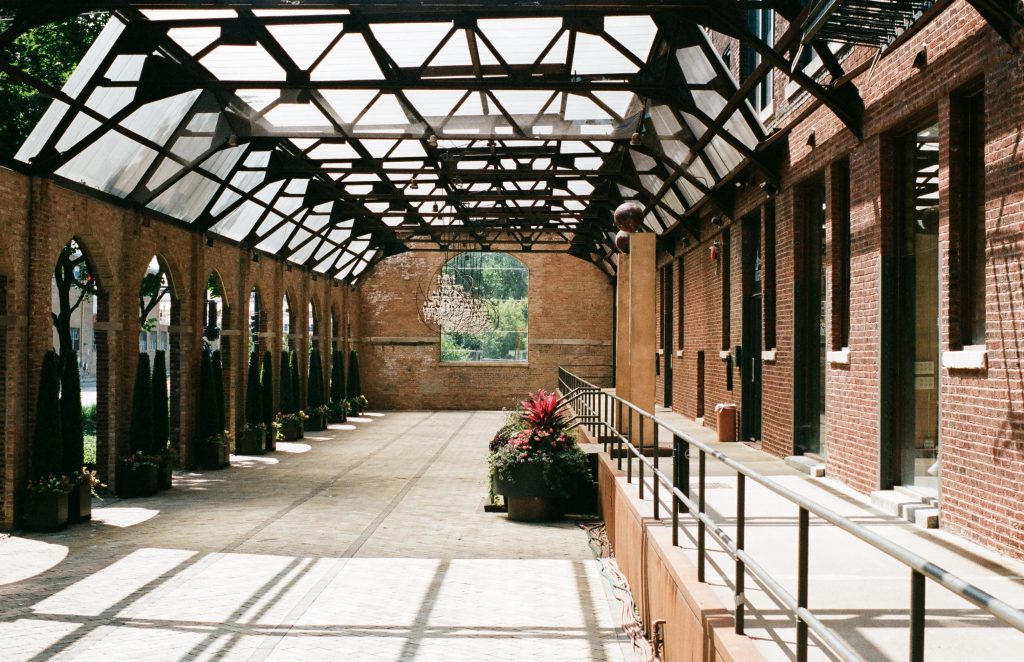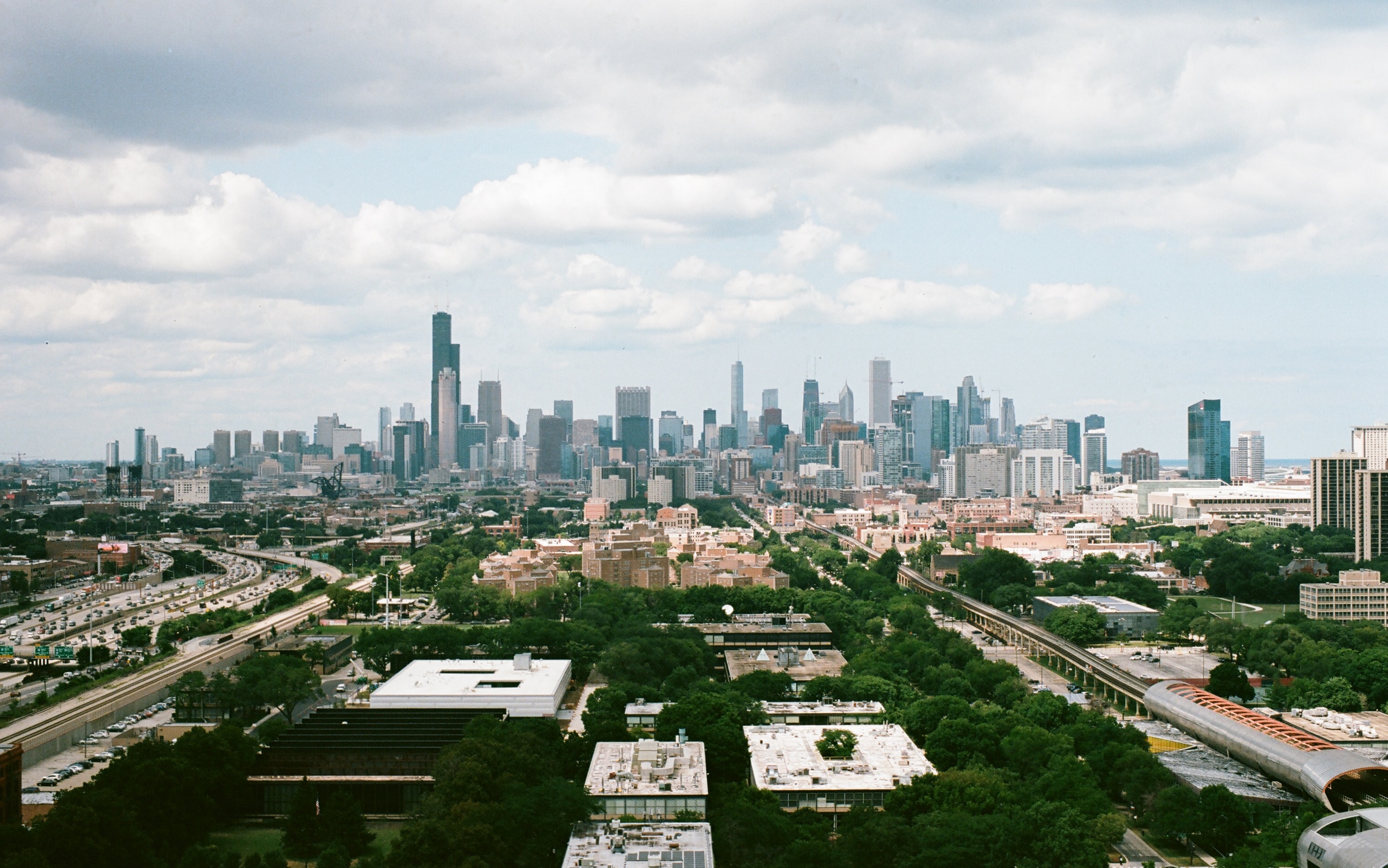This summer, the Microsoft Chicago team welcomed a new friend, an urban planner who recently relocated from Boston and who was connected to us by our wonderful colleagues there. We’re not ones to waste an opportunity to show off our city to new arrivals, so we gave him the warmest welcome we could think of: with a day-long tour of every inch of Chicago we could cover. On the way, we put a focus on some of the neighborhood spaces and organizations doing incredible civic work across the city’s 234 square miles.
Beginning at the Microsoft Chicago offices downtown, we first drove north, heading into the Gold Coast, Old Town, and Lincoln Park. We briefly stopped at St. Michael Catholic Church, touching on the historic role of the city’s Catholic parishes as community centers and providers of support to those in need through changing socioeconomic circumstances. St. Mike’s itself was long the focal point of Old Town, providing a haven for immigrant populations as they arrived in Chicago. Today, many parishes like St. Sabina still fill a similar role in their own corners of the city, providing job training and digital resources alongside more traditional social services.
Moving on up the coast to Lakeview, we discussed the substantial role of Center on Halsted as Chicago’s largest and oldest LGBTQ+ community services organization. Their activities are wide-ranging, from arts and culture programming to supportive housing services to digital literacy training classes. Past them to the north, the neighborhood of Uptown is rich with community organizations of all stripes, which have through time been a voice for groups of residents with very specific needs, such as Chinese Americans or Jewish Chicagoans.
We didn’t want to spend the majority of our time on the north side, however, since other parts of Chicago hold some of its most vibrant, impactful community meeting points and neighborhood groups. After touching the corner of Ravenswood, we turned back south and went straight down Halsted, crossing through the West Loop and Greektown before eventually landing on the former grounds of the open-air Maxwell Street market, which is now part of the University Village neighborhood. Both there and in Pilsen directly to the south, we discussed the nature of planned and unplanned neighborhood change and development.
The neighborhood around Maxwell Street was historically a gateway for immigrant populations in the lat 19th and early 20th centuries. With immigrant populations settling in various neighborhoods, Maxwell Street became an area with a longstanding homeless population. Near the former Maxwell Street market, longstanding homeless populations displaced by development access services through organizations like Pacific Garden Mission.
In Pilsen, a wide range of strong Latino groups like The Pilsen Alliance and Universidad Popular fight hard to keep their neighborhood affordable and welcoming for new immigrants and, eventually, new generations of their families. These different resident groups are vulnerable in very different ways, but organizations like these ones each seek to empower and provide resources to very specific constituencies, catering to their unique needs.

Crossing the south branch of the Chicago River, we arrived in Bridgeport, one of the city’s most diverse neighborhoods. There, we stopped into Bridgeport Art Center, which houses the workspaces of many artists who portray their own neighborhoods in unique and powerful ways, as Amanda Williams does. Bridgeport is also home to Lumpen Radio, a hyperlocal radio station that welcomes everything from progressive political commentary to harsh noise music, drawn from the neighborhood around it.
Moving east back toward the lakefront, we crossed over the Dan Ryan Expressway into Bronzeville, a neighborhood that for many decades was beaten down by segregation, disinvestment, and misguided public policies. As it regains an economic foothold, Bronzeville has become home to a wide variety of entrepreneurial initiatives like the Bronzeville Incubator, which provides professional meeting space to local businesses and operates Boxville, a shipping container retail market open weekly. Nearby, the former Anthony Overton Elementary School is being redeveloped into a coworking space and community center, repurposing a public space to still have a civic purpose where public resources are limited.
A neighborhood of nearly all black residents, Bronzeville’s cultural identity is potentially threatened by accelerating development to its north. To maintain its history as Chicago’s “Black Metropolis”, many groups work in the neighborhood to chart an equitable future and mitigate displacement. Many of these conversations come together at Sip & Savor, a longstanding local coffee shop that bustles with activity every day of the week. Here, residents strike a balance between excitement over new investments in the neighborhood and caution toward how those investments are implemented, with Bronzeville’s most vulnerable in mind. Groups like the Bronzeville Community Development Partnership exist in part to bridge that gap, interfacing with real estate developers, utilities, and other external entities to make sure that what’s shiny and new is also beneficial to all.
Continuing, we passed through Hyde Park, home to the University of Chicago. The university-affiliated Polsky Exchange startup incubator is home to quite a few notable social impact organizations, including our Microsoft Chicago friends CoderSpace. Crossing the Midway Plaisance between 59th Street and 60th Street, we made our way toward the planned site of the Obama Presidential Center in the neighborhood of Woodlawn, which will include major civic-focused facilities and programming upon its completion. Woodlawn is also home to Sunshine Enterprises, an extension of Sunshine Gospel Ministries that seeks to build economic capacity by building Woodlawn-based small businesses.
Working our way through Greater Grand Crossing, South Shore, and South Chicago, we eventually ended up in East Side, the epicenter of some of the city’s most active recent environmental justice activism. The South East Side Coalition To Ban Petcoke successfully campaigned for the closure of a facility in 2015 that stored large piles of petroleum coke (a campaign that, in part, was aided by Chicago’s civic tech community), and the Coalition continues to advocate for similar measures at other sites across the once heavily industrial section of the city.
Continuing the theme of industry, we eventually made our way over to the landmark factory town of Pullman, which was annexed into the city at the end of the 19th Century. Once largely ignored due to its relatively remote location in Chicago, Pullman has seen a major revival of preservation interest in recent years, becoming designated a national monument after a herculean effort by neighborhood advocates. Its public squares, factory facilities, and iconic rowhouses are slowly being restored, rising along with community gardens and other civic-minded amenities that were once lacking on the far south side.
Other areas, especially those without such important urban planning heritage as Pullman, aren’t as lucky. Before heading back toward downtown, we took a detour into Altgeld Gardens, considered by many to be the most remote public housing complex in Chicago. Surrounded on all sides by industry, Cook County Forest Preserves, or the Little Calumet River, Altgeld Gardens is a clear example of why a city as large as Chicago spawns so many neighborhood-level community organizations. The challenges faced by Altgeld Gardens residents are extremely different than those faced even by those closest to them in Pullman or in the suburb of Dolton, and demand local coalitions and locally-sourced solutions. Passionate self-advocacy is key to much of Chicago’s civic landscape.
By the time we made it to Altgeld Gardens, the day was already growing short. We had traveled deep into the northern and southern lakefront, but hadn’t had the opportunity to head significantly west. With only a small amount of daylight left, we decided to put a focus on one more neighborhood, about halfway back toward downtown from where we were: Englewood.
Often seen as the poster child for Chicago’s biggest socioeconomic challenges, Englewood is simultaneously a lab for resident-led community safety and community development initiatives. At the corner of 63rd Street & Halsted, where Whole Foods, Chipotle, and Starbucks all debuted experimental reduced-cost locations a few short years ago, the Greater Englewood Community Development Corporation and Teamwork Englewood provide desk space, business acceleration services, and more for community entrepreneurs and civic-minded residents. Outside, Boombox operates a popup retail hub much like the earlier example of Boxville in Bronzeville. On the opposite corner, a unit of Kennedy-King College trains students in high-end culinary arts, operating their own restaurants at low cost to neighbors.
Englewood is awash with community gardens, block clubs, brick-wall murals, and other projects that claim a portion of physical space for peaceful, empowering gatherings. At 69th Street & Green, Kusanya Café offers its storefront and attached event space for activists, educators, and more to convene and tackle local topics together. Kusanya is meant to be affordable and accessible for everyone; their offerings are priced below what is typical for a Chicago coffee shop, and they have a free coffee and food fund for those in greater need.
Englewood, like most Chicago neighborhoods, has a dizzying array of local associations and nonprofits which advance the needs of its residents. That said, the resources of citywide organizations are also an important part of Chicago’s fabric. The Chicago Public Library, City Colleges of Chicago, and more give space, time, and direction to civic efforts across all those 234 square miles. And where we didn’t explore on this trip, there are countless other organizations worth highlighting. Even where we did visit, there are plenty of groups that we didn’t have the word count to mention here. No matter where you go in Chicago, you can find a way to plug in, show up, and help transform our community for the better.

